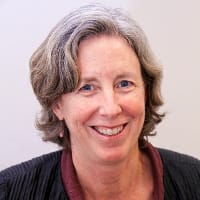
Professor
School of Geosciences
University of South Florida
http://hennarot.forest.usf.edu/main/depts/geosci/faculty/skruse
| 1996 - Present | Assistant, Associate, Professor | University of South Florida |
| 1994 - 1996 | Assistant Professor | The College of William and Mary |
| 1989 - 1994 | Assistant Professor | Eckerd College |
| 1989 | Ph.D. | Massachusetts Institute of Technology |
| 1984 | B.S. Geology and Physics | University of Wisconsin-Madison |
| 2018 - Present | IRIS-PASSCAL Standing Committee Member | |
| 2017 - Present | Contributor to NSF SAGE and PASSCAL Mid-Scale Instrumentation Proposals to NSF | |
| 2017 - 2018 | President, Near-Surface Section, American Geophysical Union |
As IRIS addresses the challenges in coming years, it is important to consider its role in the larger earth science community. To many geophysicists, IRIS is perceived as an organization that has done an exceptional job of supporting a research community that could not function without collaboration. To earth science educators, IRIS is perhaps best known as that logo in the corner of superbly made and freely accessed teaching materials. Through my service on the IRIS-PASSCAL Standing Committee, I have come to see that both these strengths were not the fortuitous result of a few good thinkers, but the result of an organization structured and focused on community input. And as this community’s engagement with pressing questions in the cryosphere, hydrosphere, and critical zone continues to grow, so will the number of IRIS stakeholders. As E and O activities reach students and faculty far from R1 universities, stakeholders will become increasingly diverse. If elected, as a Board member I would particularly seek to hear from this broadening community of IRIS-served researchers and educators, and bring their views to the table. This input should strengthen IRIS as the consortium looks to SAGE, within and beyond the current NSF award.